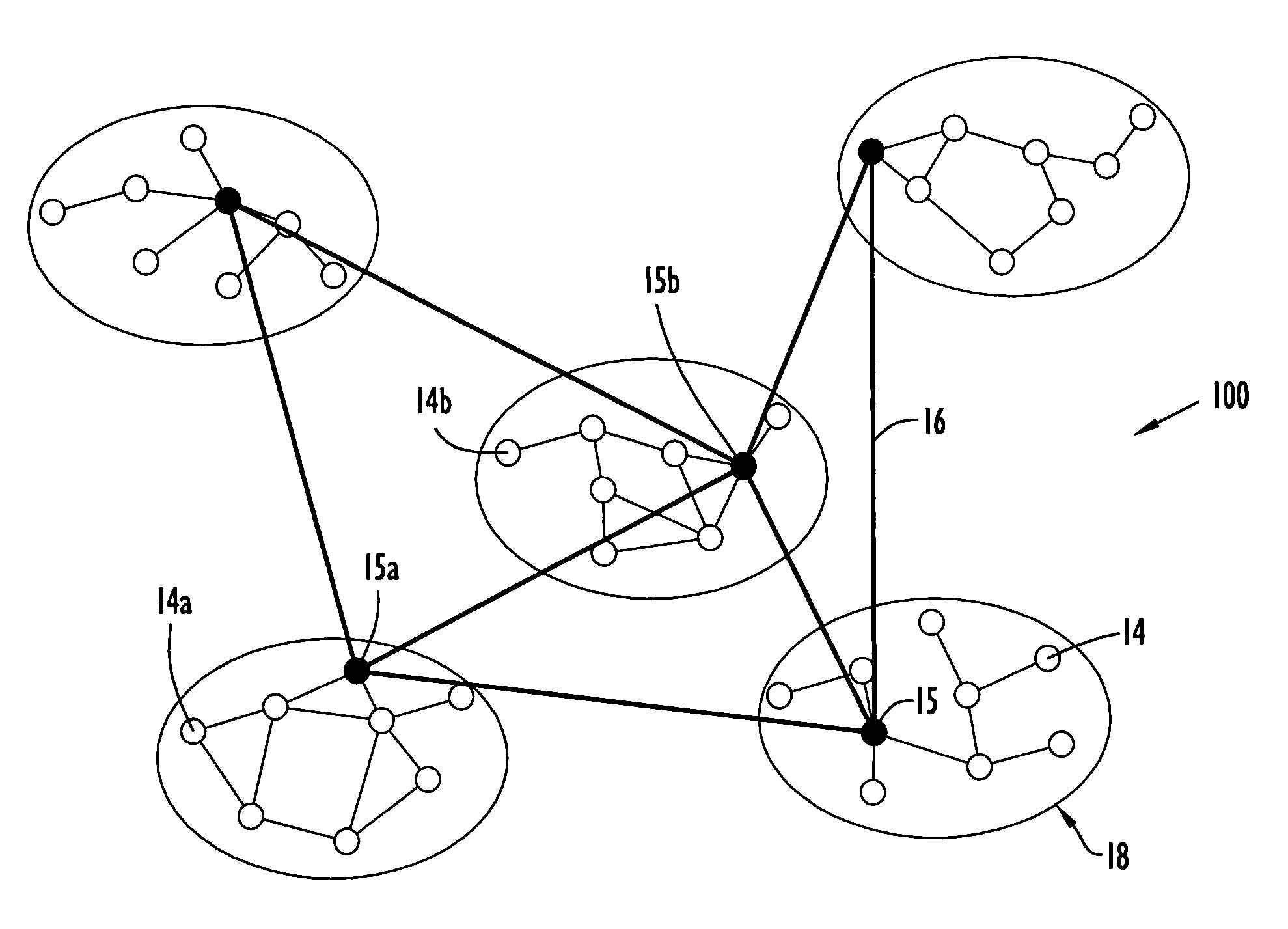Method and apparatus for time-of-day synchronization between network nodes
a network node and time-of-day synchronization technology, applied in multiplex communication, instruments, horology, etc., can solve the problems of time synchronization problems that are especially difficult, volatile, power and bandwidth limited, and the nodes that synchronize time of day lose and regain connectivity with each other
- Summary
- Abstract
- Description
- Claims
- Application Information
AI Technical Summary
Benefits of technology
Problems solved by technology
Method used
Image
Examples
Embodiment Construction
[0037]Initially, network nodes must typically establish a common network time before communications can commence due to severe timing constraints imposed by the particular network. This is accomplished by a time-of-day (TOD) synchronization protocol. If a network node with local Global Positioning System (GPS) time is present, the aggregate network time (“net time” or non-GPS based time) must be slowly pulled towards the GPS time in order to facilitate multi-tier operation.
[0038]In particular, a conventional time-of-day synchronization protocol for a Small Unit Operation (SUO) type network includes an Isolated node devoting resources to discovering and synchronizing time with RF neighboring nodes. The Isolated node issues Late Net Entry (LNE) signals at a high rate and periodically monitors an LNE channel for LNE messages from other network nodes. LNE signals are transmitted on the highest frequency channel available to the radio. The LNE signal uses a fixed code division multiple a...
PUM
 Login to View More
Login to View More Abstract
Description
Claims
Application Information
 Login to View More
Login to View More - R&D
- Intellectual Property
- Life Sciences
- Materials
- Tech Scout
- Unparalleled Data Quality
- Higher Quality Content
- 60% Fewer Hallucinations
Browse by: Latest US Patents, China's latest patents, Technical Efficacy Thesaurus, Application Domain, Technology Topic, Popular Technical Reports.
© 2025 PatSnap. All rights reserved.Legal|Privacy policy|Modern Slavery Act Transparency Statement|Sitemap|About US| Contact US: help@patsnap.com



